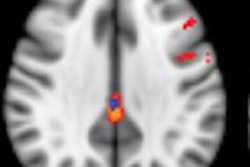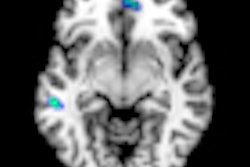
MRI investigations indicate that women who suffer from migraine headaches have more brain lesions than men, but neither gender experiences any cognitive decline from the affliction, according to a Dutch study published in the 14 November issue of the Journal of the American Medical Association.
Even among women, there were differences in the degree of the lesions, called deep white-matter hyperintensities. In the study, 77% of women with migraines exhibited deep white-matter hyperintensities, compared with only 60% of women in a healthy control group, wrote Dr. Inge Palm-Meinders, from the department of radiology at Leiden University Medical Center in the Netherlands, and colleagues (JAMA, Vol. 308:18, pp. 1889-1897).
Perhaps the most encouraging findings were that MR images among women did not show a significantly higher progression of infarctlike brain lesions associated with the migraines, and neither men nor women experienced a decline in cognitive functions due to migraines.
CAMERA-1 study
The researchers began by reviewing baseline MRI results from the original participants in the Cerebral Abnormalities in Migraine, an Epidemiological Risk Analysis (CAMERA-1) in 2000. The cohort included 295 individuals with migraines and 140 age- and sex-matched controls who were randomly selected from a community-based study of the general population who received MRI scans.
All participants were invited to return for follow-up MRI scans in 2009 as part of the CAMERA-2 study, which included a telephone interview to update patient information, a brain MRI scan, a physical examination, and cognitive testing similar to what the individuals received as part of the CAMERA-1 study.
In the latest study, the researchers determined primary outcomes by measuring changes in the number and volume of deep white-matter hyperintensities as seen on follow-up MRI in individuals with migraine, and compared those changes with updated results from the healthy control group. In addition, Palm-Meinders and colleagues noted any progression in posterior circulation territory infarctlike lesions and infratentorial hyperintensities.
In the follow-up study, the researchers were able to connect with 411 (95%) of the original 435 CAMERA-1 participants. A total of 286 individuals (66%) received a follow-up MRI scan. Of that sample, 114 had migraine with aura (in which a person notices symptoms before the headache begins), 89 had migraine without aura, and 83 were in the control group.
Gender comparison
In analyzing deep white-matter hyperintensities as seen on MRI, Palm-Meinders and colleagues found no differences between baseline and follow-up results among men in the migraine group and men in the control group.
However, women in the migraine group showed greater deep white-matter hyperintensity volume at baseline and at follow-up compared to women in the control group. Deep white-matter hyperintensity volume for women with migraines was 0.02 mL at baseline, compared with 0.00 mL for women in the control group. At follow-up, women with migraines had deep white-matter hyperintensity volume of 0.09 mL, compared with 0.04 mL for those in the control group.
The incidence of deep white-matter hyperintensity progression also was greater among women with migraine without aura (83%). Continuing that trend, women in the migraine group had a higher incidence of progression (23%) than women in the control group (9%).
The researchers attributed the increase in total deep white-matter hyperintensity volume among women with migraine to more new lesions rather than an increase in the size of pre-existing lesions.
In the migraine group, there was an incidence of 10 or more new lesions among 43 (43%) of 145 participants, compared with five (9%) of 57 women in the control group. Deep white-matter hyperintensities also were more evenly distributed among women with migraines.
The follow-up MRI results also showed that infarctlike lesions present during the baseline scan were also evident at follow-up. However, there was no significant association of migraine with new posterior circulation territory infarctlike lesions between the two groups.
In addition, 18 (9%) subjects in the migraine group with posterior circulation territory infarct had a less favorable cardiovascular risk profile than the 185 participants (91%) with no such infarct.
People with infarctlike lesions also were older, with a mean age of 62 years, compared with 57 years for individuals without infarctlike lesions. They also had a higher prevalence of clinically diagnosed stroke (22% versus 3%, respectively) or hypertension (67% versus 33%, respectively).
Based on the findings, Palm-Meinders and colleagues recommended additional research, adding that "functional implications of MRI brain lesions in women with migraine and their possible relation with ischemia and ischemic stroke warrant further research."



















